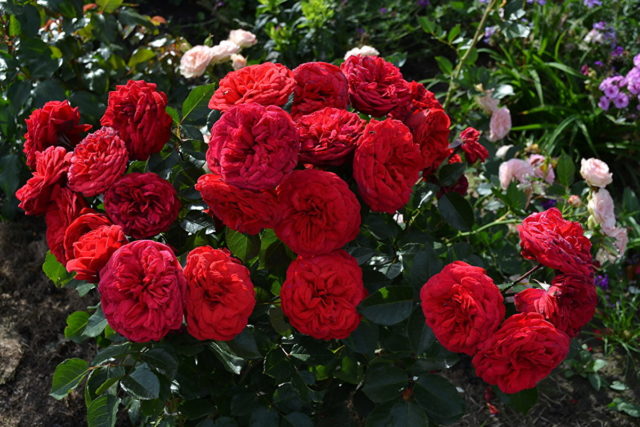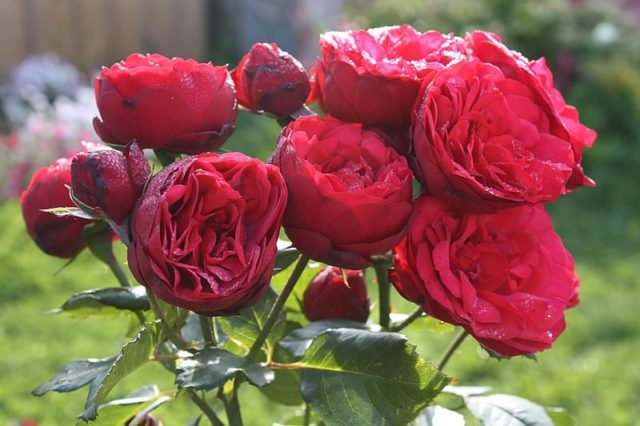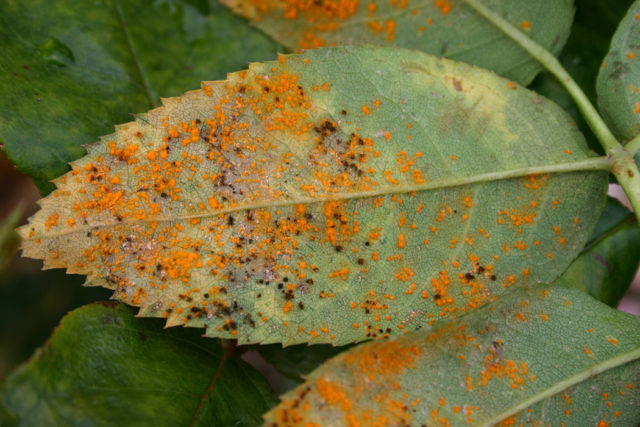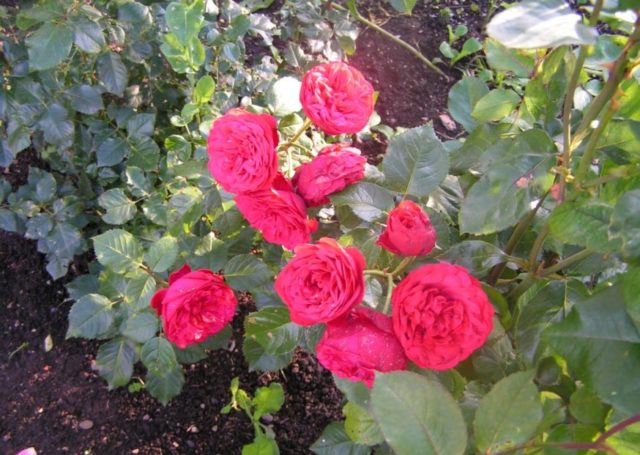Content
Rose Red Piano is a hybrid tea variety that is very popular among gardeners. The plant is appreciated for its excellent decorative qualities, as well as a number of other positive characteristics. The variety is suitable for growing in all regions of the Russian Federation. It is enough to follow the simple technology of cultivation in the open field.
Breeding history
The Red Piano variety was developed in Germany. The breeder is the famous breeder Christian Evers, a representative of the German company Rosen Tantau.
The variety was obtained and registered in the international catalog in 2007. Red Piano roses are distributed in some nurseries under the name Hope and Glory and Mistinguett. The variety has been successfully tested in the open field, where it has shown a high level of resistance to adverse conditions. For this he was awarded numerous awards at the exhibitions of ornamental plants.
Description of Red Piano rose and characteristics
It is a medium-sized shrub. The height of the Red Piano rose reaches 120 cm. The plant belongs to the peony plant due to the fact that it consists of erect stems. Its diameter reaches 1 m. By cutting it, it can be given a spherical or hemispherical shape.
Stems are thin, strong, of medium elasticity. They are covered with green bark. The number of thorns is insignificant.
Red Piano roses have dense glossy foliage. Plates are egg-shaped for 2-3 pieces. The color is dark green with yellowish veins.

Red Piano rose bloom begins in early June
In May, a large number of buds are formed on each stem. They grow up to 10 on one shoot. Single flowers rarely appear, usually on annual plants.
Flowering continues continuously until early to mid-September. The buds open slowly. In the early stages, they are spherical. In the future, the flowers become cupped. The number of petals on each is 50-60.
Gardeners appreciate the Red Piano rose variety for its unique color. It is saturated, does not fade in the sun. The flowers are red, but depending on the light, they can take on a pinkish or peach hue. They are thick double. The petals become denser as they approach the center. They exude a light pleasant aroma, reminiscent of the smell of raspberry berries.
The peony rose Red Piano is characterized by high winter hardiness. The plant tolerates temperatures up to -29 degrees, therefore, in the southern regions of the Russian Federation, it does not need to be covered in the cold season. In other climatic zones, it is recommended to protect the bushes from freezing.

Red Piano rose flowers do not fade in the bright sun
The plant tolerates short-term shading well. Therefore, it is usually planted in partial shade or in the sun. The variety is resistant to short-term droughts.
Red Piano roses have low susceptibility to most fungal infections. The plant is extremely rarely affected by powdery mildew, black spot and other diseases. The pronounced aroma of flowers can attract insects.
Important! Hybrid tea roses are the least resistant to pests. Gardeners should take measures to protect their shrubs.
The Red Piano variety of English roses is recognized as one of the most unpretentious. Therefore, such a plant is ideal for decorating any suburban area.
Advantages and disadvantages of the variety
Numerous descriptions, photos and reviews of Red Piano roses indicate that this plant is superior to other hybrid tea varieties. This is explained by the undeniable advantages of this variety.
Among them:
- long flowering period;
- a large number of bright buds;
- resistance to sunlight, drought;
- pronounced winter hardiness;
- low sensitivity to infections.
Among the shortcomings, they distinguish the exactingness of the composition of the soil, as well as the need for regular pruning to maintain the shape of the bush. Some gardeners are faced with pest infestation.
Reproduction methods
They use exclusively vegetative methods. Seed collection is considered impractical, since the grown plant loses its specific varietal qualities.
Breeding methods:
- dividing the bush;
- harvesting by cuttings;
- reproduction by layering.
These are the most effective options. Usually, the harvesting of new planting material is carried out in the spring season, before the beginning of budding. As a result, less damage is done to the plant.
Growing and care
In order for the bush to fully develop and bloom regularly, you should choose the right place for planting. An important condition is lighting. The bush is placed in an area that receives enough sunlight. It is impossible to grow the Red Piano hybrid tea rose in the shade, as it will be weak.
The plant prefers a nutritious soil with peat and compost. The optimum acidity level is 5.5-6.5 pH.
Roses are planted in the spring. You can place the seedling in the ground in the fall. Then it adapts better to the cold before winter.
Landing technology:
- Dig a hole 60-80 cm deep.
- A layer of expanded clay, crushed stone or pebbles is placed on the bottom.
- Cover with soil by half.
- The roots of the seedling are soaked in an antiseptic solution.
- The plant is placed in a pit.
- The root collar should be 8-10 cm below the surface.
- The plant is covered with soil and lightly tamped.

After planting in the ground, seedlings need abundant watering
It is recommended to use a mixture of garden soil, compost and peat as a soil for roses. River sand, rotted manure or humus can be added to the composition.
Shrub rose Red Piano needs liquid. The soil should not be allowed to dry out, especially during flowering, as this provokes wilting. Each bush requires 15-25 liters of water. In the summer, watering is carried out 2-3 times a week as the soil dries out.
The plant needs light, breathable soil. Loosening and mulching are carried out every 2-3 weeks. Weeds and other plant debris should be removed around in a timely manner.
For long-term flowering, the bush is fed. In the spring, fertilizers with nitrogen are applied twice, contributing to the growth of shoots and the formation of buds. In the future, potassium and phosphorus are required. They are given during flowering and in the fall, in preparation for winter.
Formative pruning is carried out 2-3 times per season. The first haircut is required in the spring, early in the growing season. They remove excess shoots that provoke deformation of the bush, as well as wilted or dry stems. For the winter, the Red Piano rose is cut off, leaving short aerial shoots and spud with a layer of 15-20 cm to protect it from frost.
Pests and diseases
The variety is resistant to infections, so it practically does not get sick. Pathology can be caused by stagnation of fluid in the roots or prolonged drying out. Powdery mildew and black spot are not characteristic of this flower.

Rust appears on the leaves more often on Red Piano roses
To prevent diseases, it is enough to spray the bush with a fungicide twice a season. For prevention, the drugs Fundazol and Fitosporin are suitable. Processing with copper sulfate, Bordeaux mixture is allowed.
The scent of the flowers attracts pests, of which the most common are:
- aphid;
- rose cicada;
- thrips;
- scabbards;
- slobbering pennies;
- spider mites.
When symptoms of damage are detected, diseased shoots are removed. The bush is treated with insecticides in accordance with the instructions.
Application in landscape design
Gardeners grow the Piano red rose alone or in groups. It looks best against a background of bright green lawn grass. It is not recommended to plant it next to low-growing ground cover plants. To focus on roses, it is placed next to shrubs that do not bloom.
As a decorative element, the Red Piano variety is planted:
- along the edges of the curbs;
- near artificial reservoirs;
- next to verandas, loggias;
- not far from fences, fences;
- in wide flower beds;
- in the mixborders in the foreground.
Red Piano rose flowers are also cut to decorate rooms and create bouquets. They stay fresh for several weeks.
Conclusion
Rose Red Piano is a popular ornamental variety that is recognized as one of the least whimsical and demanding. The plant is resistant to low temperatures, fungal infections and other adverse factors. You can grow such a flower in almost any conditions, observing simple agrotechnical standards that are available even to novice gardeners.











